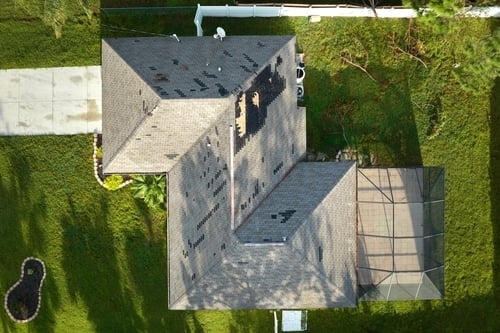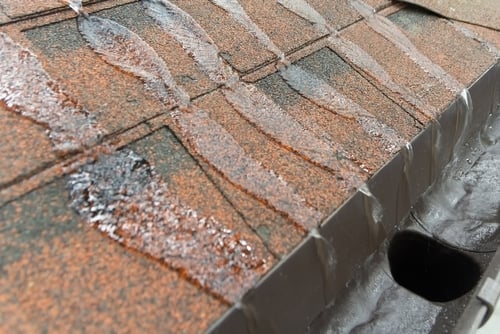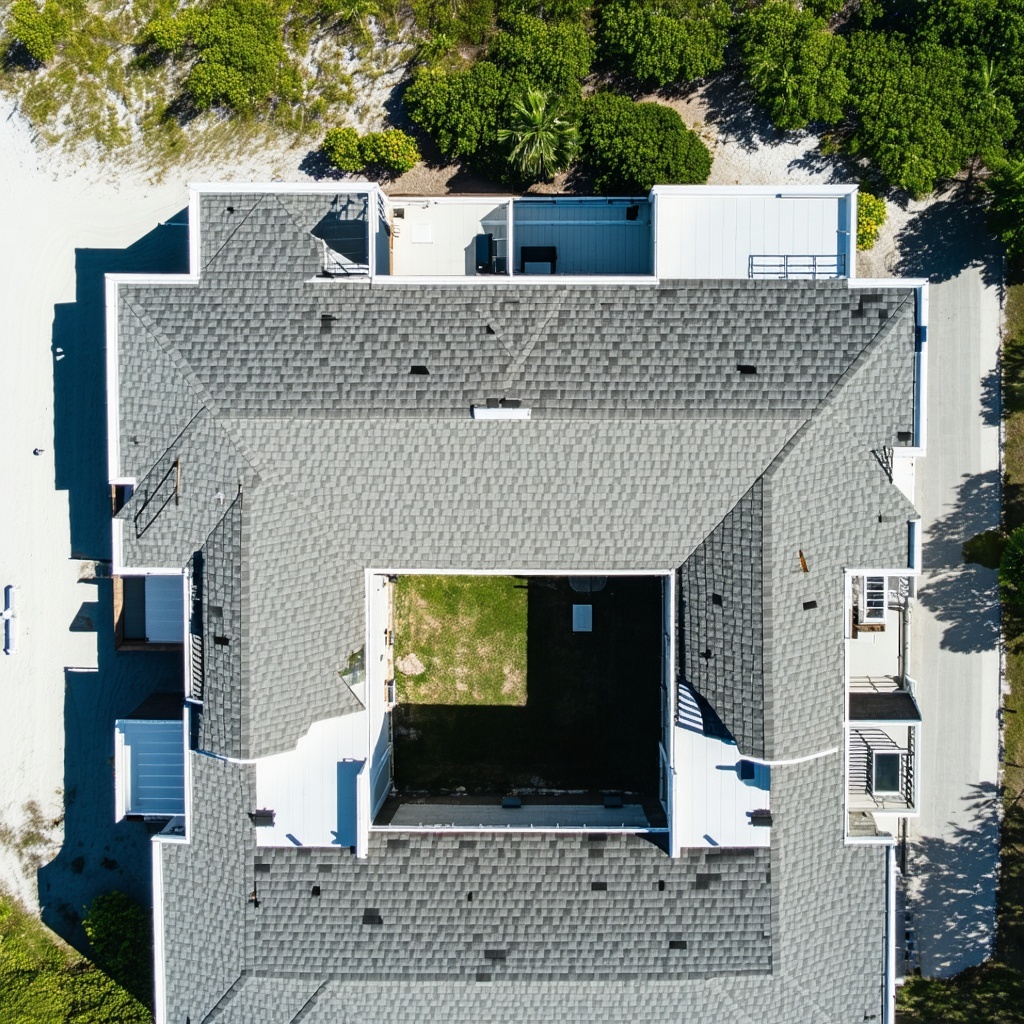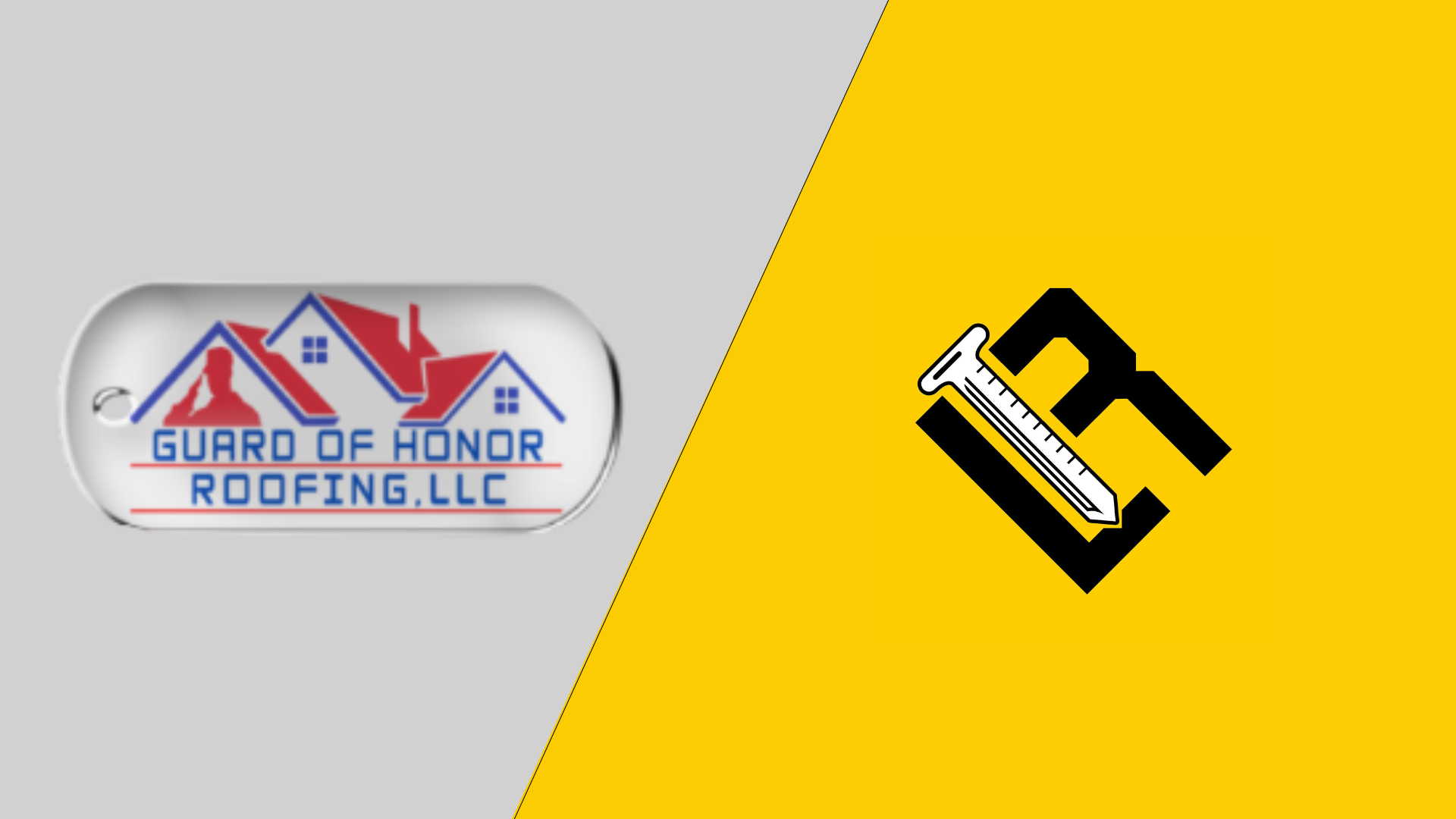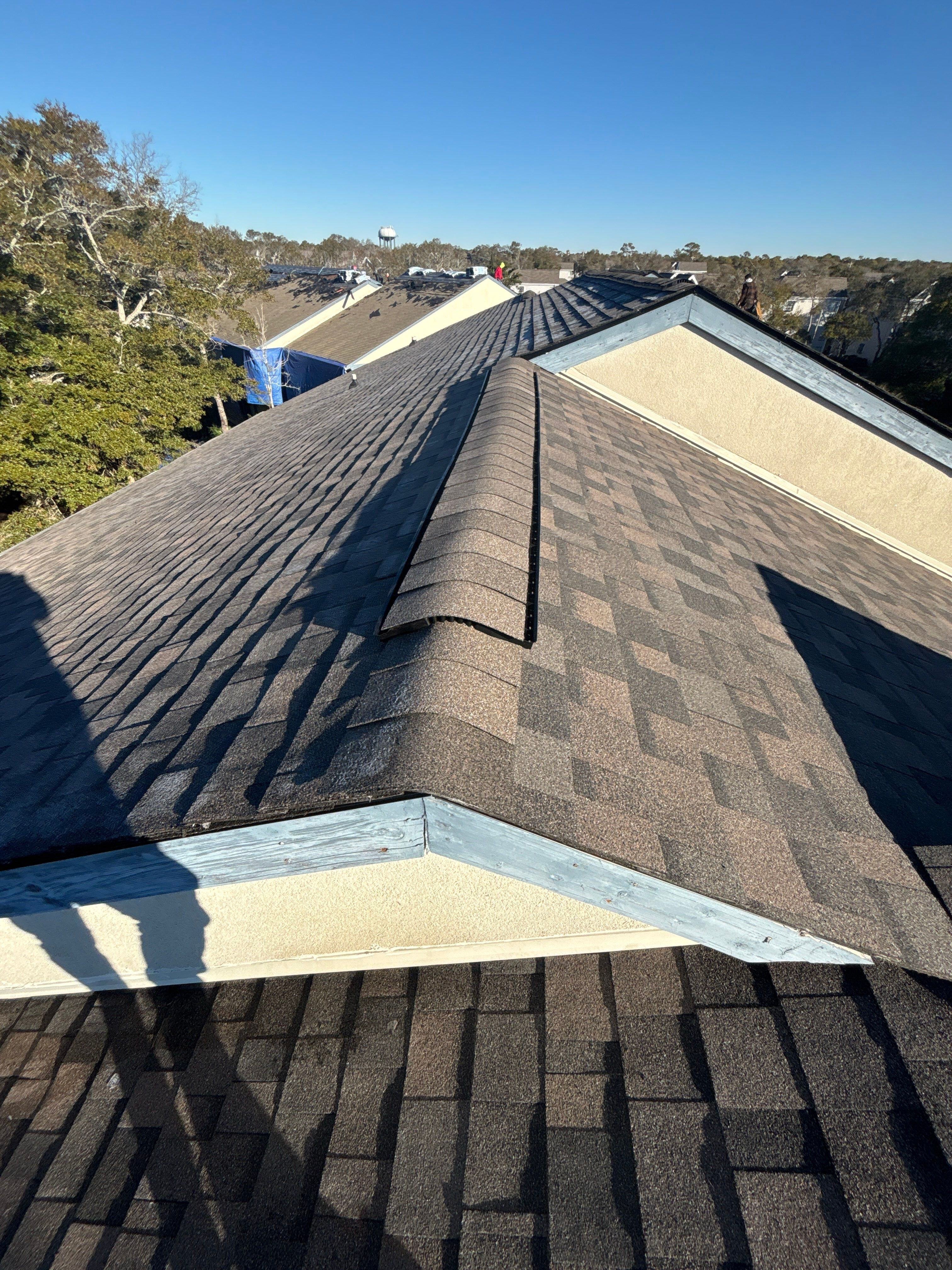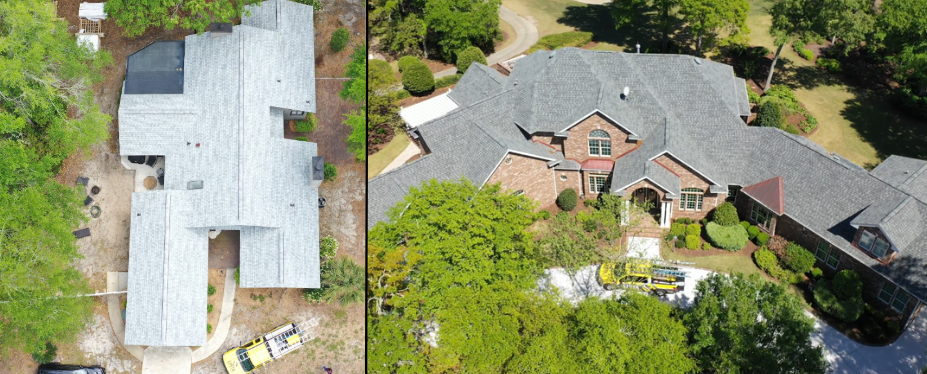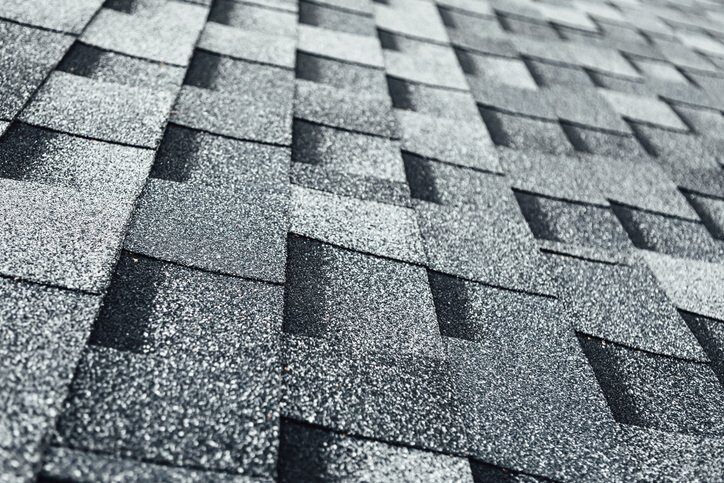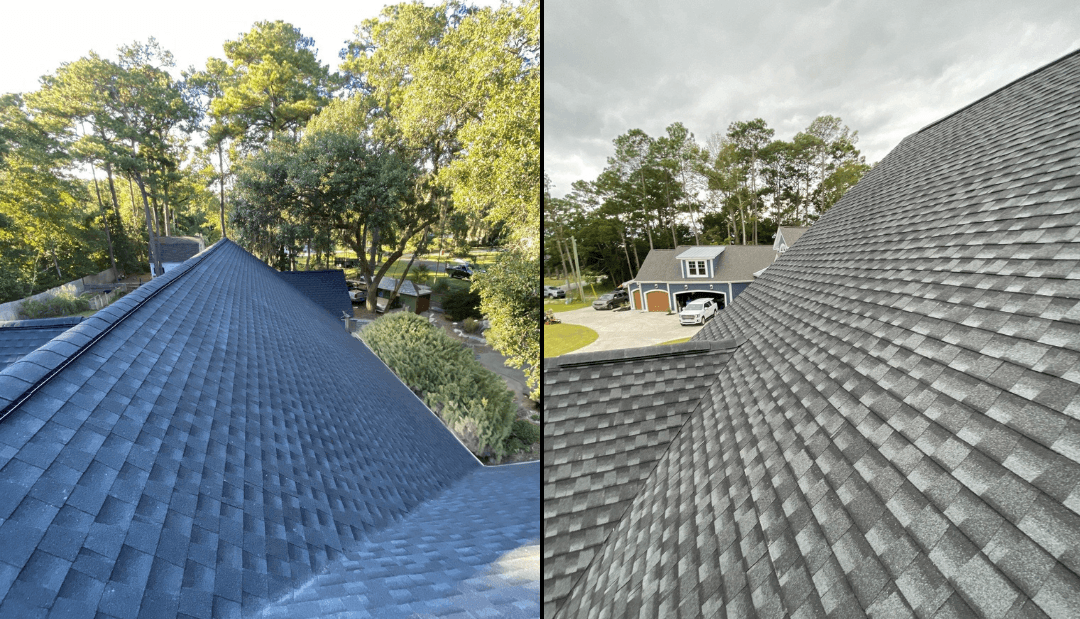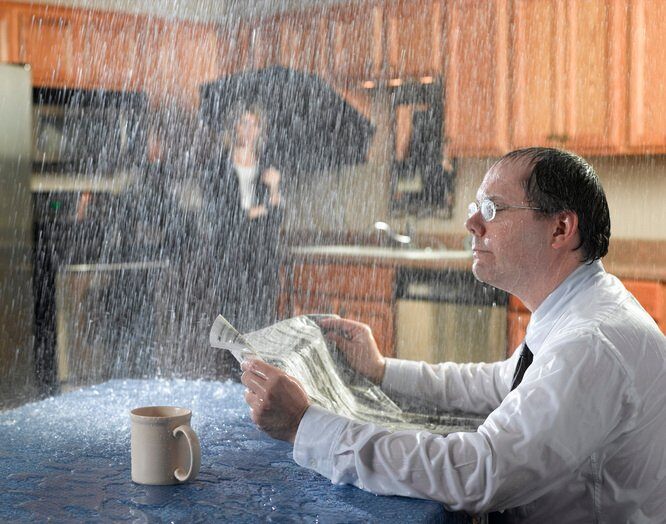Problems with Rain Diverters on Your Roof in Myrtle Beach
October 18th, 2024
3 min read
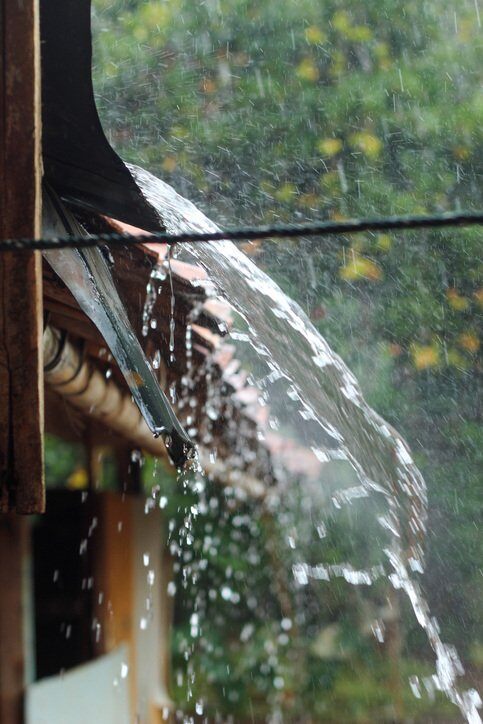
Are you sick of water tumbling off your roof when it rains?
Then you might be exploring options that direct water off your roof without drenching you the moment you step outside.
Rain diverters are often used as a solution to control water runoff from roofs, especially in areas where homeowners want to prevent water from cascading directly over doorways or windows. While they may seem like an affordable and convenient fix, rain diverters can pose several issues when not installed or maintained properly.
We typically advise against rain diverters because while they can be a quick solution, they can be a real headache to deal with later on. But why?
We’ve narrowed it down to 4 main problems:
Here, we explore the common problems associated with rain diverters so you can be informed before you have them installed on your home.
#1 Problem with Rain Diverters on a Roof: Water Pooling
One of the primary problems with rain diverters is the tendency for water to pool if they are not installed on an angle. A common mistake occurs when diverters are installed flat or without sufficient pitch. This prevents water from flowing off the roof, leading to standing water, which can eventually cause damage to the roofing materials they’re installed on. 
- Improper Installation: If the diverter is not angled correctly, water will not flow off effectively, especially during heavy rain. It is recommended that diverters have an angle and be at least four to five inches wide to be properly installed under the shingles.
- Debris Accumulation: Pooling can also result from debris that collects behind the diverter, further hindering water flow and worsening issues with water retention.
#2 Problem with Rain Diverters on a Roof: Ineffectiveness in Heavy Rain
While they might prevent water runoff in light rain, heavy downpours can cause water to flow over the diverter's edge, rendering it ineffective.
- Height Issues: Standard rain diverters, especially those installed with typical drip edge, are often too short to prevent water overflow in a storm. Ideally, diverters should be taller than the standard inch-and-a-half height, possibly closer to three or four inches to provide better protection during heavy rain. When debris is present or the rain is too heavy, water will simply overflow the diverter. This can lead to the exact problem the diverter was meant to prevent—water pouring down in unwanted areas, much like a water park bucket dumping water.
#3 Problem with Rain Diverters on a Roof: Roof Leaks
Another issue is that rain diverters, when not properly sealed or maintained, can cause water to push back up under the shingles, leading to leaks. Over time, this water can rot the roof decking and damage the underlying structure. The goal with an accessory like this is to help water flow off of your roof in appropriate areas.
- Unidentified Leaking: Since diverters are often installed near the edge of the roof, leaks may go unnoticed as water seeps into the soffit or overhang areas, rather than into the living space. By the time the damage is detected, significant rot may have already occurred.
- Leaking Through Nail Holes: Water can also leak through the nail holes used to install the diverters. Over time, repeated exposure to moisture can cause these holes to expand, leading to even more leakage.
#4 Problem with a Rain Diverter on a Roof: Maintenance Requirements
 Rain diverters require regular maintenance to ensure they continue to function properly. Homeowners need to clear debris that can accumulate on the diverter and may need to reseal it to ensure that it is functioning properly. In addition, the shingles beneath the diverter are often subject to faster wear due to constant water exposure. This can cause the granular material on the shingles to wear off, leading to faster deterioration.
Rain diverters require regular maintenance to ensure they continue to function properly. Homeowners need to clear debris that can accumulate on the diverter and may need to reseal it to ensure that it is functioning properly. In addition, the shingles beneath the diverter are often subject to faster wear due to constant water exposure. This can cause the granular material on the shingles to wear off, leading to faster deterioration.
- Cleaning: Regular cleaning is essential to prevent debris from blocking water flow. Without this, the diverter will collect leaves, dirt, and other materials that can worsen pooling or overflow.
What are Homeowner's Experiences with Rain Diverters?
When you're making plans to alter your home, it's always helpful to see what other homeowners say about the same alternations. It seems homeowners generally have a mixed opinion on rain diverters. Some homeowners having a more neutral opinion on rain diverters. Others say rain diverters caused damage to their roof that resulted in a series of costly repairs over time.
It seems that each homeowner's experience stems from their unique set of circumstances. We took to Reddit to see what homeowners had to say about their experience. The example below reflects what we know to be true as roofers, but also the general consensus of homeowners on the topic of rain diverters.
While gutters offer a more comprehensive solution, it may be beneficial to speak with a roofer about your concerns. After all, gutters are a larger investment than rain diverters, but they may save you more money in the long term.
Gutters vs. Rain Diverters – Choosing the Best Long-Term Solution
While rain diverters can offer a quick, short-term fix, they often fall short in terms of long-term effectiveness, especially in areas prone to heavy rainfall or debris. While there are some companies that sell rain diverters, most roofing companies will use materials they have, like drip edge or other soft metals, to create a rain diverter for your roof. Meaning they have been tested or trialed prior to their installation on your roof.
If you’re looking to have long rain diverters installed on your roof as a cheaper alternative to gutters, it’s important to note the damage this can cause to your shingles. Ultimately racking up a similar or larger bill for repairs than the cost of gutters. And while gutters also need to be cleaned and maintained, they can cost you less in the long run.
However, if you’re looking for an inexpensive short-term option, rain diverters may be right for you. If you have additional questions about how to maintain the integrity of your roof, give us a call! We’re happy to help in any way we can!
Jeffrey Linta is a 3rd generation roofer who grew up working in his family's roofing business (Linta Roofing, Inc.). He got his start tearing off roofs during the summer while attending North Myrtle Beach High School. Now running one of the most successful roofing businesses in the Grand Strand area, Jeffrey has lived and breathed roofing for his entire working career. Some of his accolades include GAF Master Elite Contractor, SC Safehome certified contractor, Group 5 SC Licensed Commercial Contractor, and GAF Master Commercial roofing contractor. Under his leadership, Linta Roofing, Inc. has served thousands of homeowners and business owners in the Grand Strand area. Linta Roofing achieved awards like the Sun News’s “Best of the Beach” and A+ Rating with the Better Business Bureau all while receiving hundreds of 5-star reviews year after year. Jeffrey is a Grand Strand born and raised local. When he is not running Linta Roofing, he spends time fishing with his wife Erica and walking the beach with his dog Dixie.
Topics:







